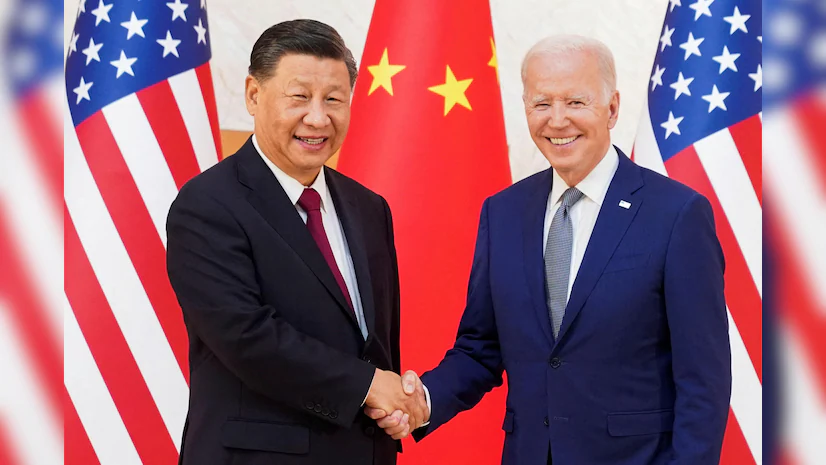How China Targets U.S. States to Expand Its Influence
Experts Warn of Growing Risks in U.S.-China Relations at Subnational Levels

The United States has been ramping up efforts to safeguard its national security against potential threats from the Chinese Communist Party (CCP). However, Beijing has found a strategic way to bypass federal restrictions by targeting a weaker link—state and local governments. This maneuver is now raising alarms among policymakers and experts alike, who warn that these tactics could undermine federal efforts to curb Chinese influence across various sectors.
While Washington has focused on limiting China’s ability to acquire sensitive assets, like farmland, over fears of espionage, a new report suggests that Beijing is more invested in cultivating influence through subnational relationships. According to the Foundation for Defense of Democracies (FDD), China’s strategy involves leveraging local economic interests, partnerships, and investments to strengthen its foothold in the U.S.
China’s Subnational Playbook
The FDD report, titled “The Near Enemy: China’s Subnational Reach Into the United States,” reveals how Beijing’s influence in the U.S. surpasses that of any other foreign power. It highlights that China’s tactics not only dwarf the Soviet Union’s Cold War-era efforts but also exploit the decentralized nature of U.S. governance.
“Chinese subnational influence in the United States today grossly outweighs the capacity enjoyed by any other external power,” the report states.
China achieves this by forming economic ties and cultural programs with local governments, which often prioritize job creation and economic growth over security concerns. By doing so, Beijing bypasses federal oversight and embeds its influence directly at the state and local levels

The Divide Between Federal and Local Priorities
The U.S. federal system’s separation of powers creates an asymmetry that China skillfully exploits. While national authorities handle foreign policy and security, local governments focus on delivering public services and fostering economic development. This division of responsibilities leaves state and local leaders more susceptible to influence campaigns designed to promise economic benefits while downplaying potential risks.
A 2019 report by China’s state-run news agency Xinhua observed that many U.S. local governments actively seek cooperation with China, even during heightened trade tensions under the Trump administration. Fast forward to today, and the situation remains largely unchanged.
California Governor Gavin Newsom’s 2023 visit to China underscores this trend. During his trip, he met with Chinese President Xi Jinping to discuss economic development and cultural exchange programs. Similarly, in 2018, Arkansas’ then-Governor Asa Hutchinson advocated for stronger state-level ties with China, describing such relationships as crucial to national progress.
“While federal officials handle foreign policy, state-level cooperation with China creates opportunities for economic growth,” Hutchinson said at the time.
Influence Beyond Economics
China’s subnational influence extends far beyond economic investments. It infiltrates critical areas like technology, education, research, and even media. According to the FDD report, Beijing uses these relationships to sway public opinion and influence national narratives.
Nathan Picarsic, an FDD senior fellow and co-author of the report, emphasized how strategic these efforts are. “State and local actors are valuable and ripe targets for influence efforts,” Picarsic said. “Beijing’s approach manipulates local avenues to bypass federal barriers, creating openings for the CCP to push its agenda within U.S. borders.”
The report further warns that such influence not only fosters dependency on Chinese investments but also makes it easier for Beijing to advance its global ambitions, including shaping policy frameworks in the U.S.
The Call for Unified Action
The lack of coordination between federal and state governments is a glaring issue. Experts argue that without a unified strategy, the U.S. risks undermining its own security. The FDD report calls for integrated policy responses that address China’s ability to exploit subnational channels.
“Defending against China’s subnational influence requires a more integrated approach that bridges the gaps between federal, state, and local priorities,” the report stated.
The authors urge policymakers to rethink how state and federal systems can collaborate to close these vulnerabilities. Strengthening oversight of Chinese investments, scrutinizing cultural exchange programs, and educating local leaders about the risks of such relationships are some of the recommendations outlined in the report.
What’s Next for U.S.-China Relations?
As U.S.-China relations remain tense, this growing subnational strategy by Beijing could complicate Washington’s efforts to maintain control over its national security. Experts stress that understanding and addressing these localized tactics is key to mitigating risks posed by the CCP.
For now, it’s clear that China’s influence at the state and local levels remains a powerful tool, one that demands urgent attention from both national and local policymakers.
SUMMARY
1. China's Subnational Strategy: Beijing bypasses federal restrictions by targeting U.S. state and local governments. This strategy leverages economic partnerships, cultural exchanges, and local investments to embed Chinese influence while avoiding federal oversight.
2. Influence vs. Federal Safeguards: Federal efforts focus on national security and foreign policy, while state and local governments prioritize economic growth, creating vulnerabilities. The CCP exploits this division, fostering relationships that prioritize economic benefits over security risks.
3. Examples of State-Level Cooperation: California Governor Gavin Newsom's visit to China in 2023 to discuss economic and cultural initiatives. Former Arkansas Governor Asa Hutchinson’s 2018 advocacy for state-level ties with China, emphasizing economic cooperation despite trade tensions.
4. Broad Scope of Influence: China’s efforts extend beyond economics, influencing areas like technology, education, media, and research to shape U.S. narratives and policies.
5. Lack of Coordination in U.S. Policy: The absence of unified federal and state strategies undermines the U.S.’s ability to counter Chinese influence effectively. A more integrated approach is needed to address vulnerabilities and protect national security.
6. Call to Action: Experts urge policymakers to strengthen oversight on Chinese investments and educate local leaders on risks. Unified federal-state collaboration is critical to mitigating CCP influence and safeguarding U.S. interests.
Stay updated with Trendsnip for more breaking news, insights, and in-depth analyses on global trends and developments.
About the Author
Michael
Administrator
Michael David is a visionary AI content creator and proud Cambridge University graduate, known for blending sharp storytelling with cutting-edge technology. His talent lies in crafting compelling, insight-driven narratives that resonate with global audiences.With expertise in tech writing, content strategy, and brand storytelling, Michael partners with forward-thinking companies to shape powerful digital identities. Always ahead of the curve, he delivers high-impact content that not only informs but inspires.



